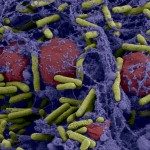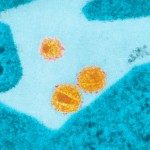Lien vers Pubmed [PMID] – 17502670
Methods Mol. Biol. 2007;379:51-68
DC-SIGN and L-SIGN are C-type lectins that recognize carbohydrate structures present on viral glycoproteins and function as attachment factors for several enveloped viruses. DC-SIGN and L-SIGN enhance viral entry and facilitate infection of cells that express the cognate entry receptor (cis-infection). They are also able to capture viruses and transfer viral infections to other target cells (trans-infection). In this chapter, we will give an overview of protocols used to produce soluble viral glycoproteins at high levels and to study the molecular basis of viruses/DC-SIGN and L-SIGN binding and internalization. We will also describe techniques to investigate the molecular mechanisms by which DC-SIGN or L-SIGN spread viral infections.

